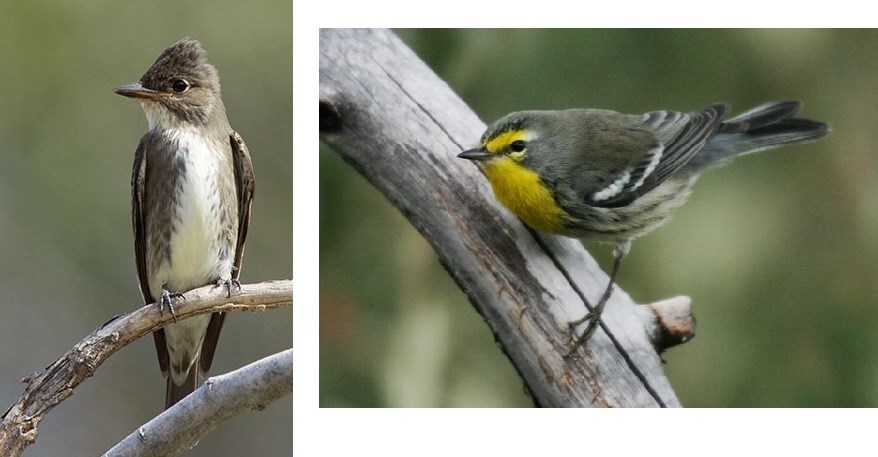Part of a series of articles titled NRCA 2022: Condition of Valles Caldera’s Natural Resources and Scenic Views.
Article
Songbirds at Valles Caldera National Preserve

Photos © Robert Shantz.
What are the biggest threats to songbirds?
Birds face numerous threats throughout their range, including:
- loss and degradation of habitat,
- bright city lights that disorient birds when migrating at night,
- predation by domestic cats,
- contaminants and pollution that can sicken or kill birds, and
- reflective buildings, communication towers, and wind turbines with which birds may collide.
Assessing the condition of songbirds at Valles Caldera
A recent Natural Resource Condition Assessment (NRCA) through the NPS NRCA Program focused on seven resources at Valles Caldera. NRCAs evaluate natural resource conditions so that parks can use the best available science to manage their resources. Songbirds were one of the seven focal resources selected for this project. For the condition assessment, ecologists at Utah State University:
- Updated the preserve’s checklist of birds (a comprehensive checklist by habitat type was lacking),
- Identified songbird indicator species (representative of a given habitat) within each of the major habitat types in the preserve,
- Assessed condition of songbirds with respect to species richness (the number of different species) and abundance (the number of birds within each species), and
- Addressed gaps in our knowledge of birds in the park.
What did we learn?
- Songbird species richness and abundance at the preserve are in good condition! All or nearly all potential species (in each of five habitat types) are present, trends in species of concern appear stable, and key indicator species are present. These results support what an Important Bird Area Valles Caldera is, especially considering the nationwide decline in birds.
- The checklist we compiled of all bird species confirmed for the preserve consisted of 196 species! 117 of these species are known or suspected to breed in the park. Note that these numbers are for all bird species, not just songbirds. Of the 196 species, we determined habitat preferences (such as ponderosa pine) for 143 species.
- Among the breeding birds on the list, 53 are of conservation concern at the national or state level.
- Potential species richness (meaning the number of species) based on the checklist is highest for ponderosa pine forests (69 species), followed by mixed coniferous forest (64 species) and riparian habitat (59 species).
- For the proportion of species observed during surveys compared to the list of potential species (based on the checklist), we found that mixed conifer-burned plots had the highest proportion of overlap (84%), followed by ponderosa pine (76%), ponderosa pine-burned plots (73%), and mixed conifer plots (53%).
- A gap in what we know about songbirds in the park could be filled by regular songbird monitoring in high-elevation spruce-fir forests, as well as wet meadows and riparian areas.
- Data gaps for birds other than songbirds include an absence of waterfowl surveys (the park may provide important winter habitat and migration stopover sites), and the lack of current surveys for diurnal raptors (that is, eagles, hawks, and falcons).

NPS Photo.
What can park managers do with this information?
Information from the NRCA report and process is valuable for planning and management actions in the preserve. For example, the NRCA process brought managers and scientists together to identify opportunities for management, interpretive, and monitoring partnerships. A partnership might be formed, for example, between the preserve and nearby Bandelier National Monument for mist-netting and interpretive activities related to bird-banding programs. The NRCA report also identified remaining gaps in our knowledge; filling at least some of these gaps will further support managers in their important job of managing park resources.
It is also important to know, based on the indicator and measures used in the analysis, that species richness and abundance of songbirds in the areas surveyed are considered good at this time, supporting recognition of the preserve as an Important Bird Area.
Information in this article was summarized from: Albright J and Others. 2022. Natural resource conditions at Valles Caldera National Preserve: Findings & management considerations for selected resources. Natural Resource Report. NPS/VALL/NRR—2022/2409. National Park Service. Fort Collins, Colorado. https://doi.org/10.36967/nrr-2293731
Back to NRCA Program Home>
Last updated: January 12, 2023
